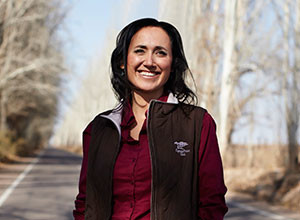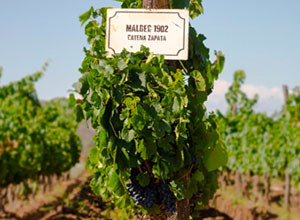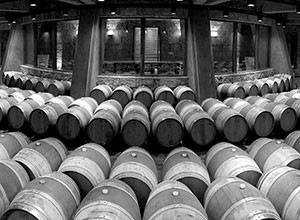The Ritz-Carlton Shanghai, Pudong

A legend because…
It was Nicolás Catena, whose grandfather had left Italy to settle in Argentina in 1902, who thrust Argentinian wine into the modern era. A widely travelled academic economist, he learned from his exposure in the 1970s both to great Bordeaux and the huge promise of Napa wines. In the early 1980s, Catena and his consultants, including Paul Hobbs and Jacques Lurton, agreed the key was to plant the right varieties in the right location, specifically cooler, higher sites where jamminess would not be an issue. Catena had also worked at the family winery and was able to supervise the selection of high-quality plant material. The Nicolás Catena Zapata demonstrated the fruition of his aspiration and hunches.

By the mid-1990s, Catena’s experiments were bearing fruit. With her own background in science, his daughter Laura assisted him greatly, helping to bring a specifically Argentinian identity to the Catena wines. Vineyards were planted at different altitudes to produce a hierarchy of wines, but the project’s finest achievement was the Nicolás Catena Zapata. The 1997 was the first vintage, vinified by then winemaker José Galante. After its release in 2000 it was entered into blind tastings with other 1997 wines such as Château Latour, Opus One, Caymus Special Selection and Solaia, and the Argentinian wine regularly took first or second place.
According to the winery, the winter of 1999 was very cold in Mendoza with variable humidity levels. Spring and the beginning of summer arrived with temperatures slightly below normal, resulted in more isolated clusters of smaller berries in the Malbec varietals, a phenomenon which helped to increase the overall quality and concentration of this fruit in the 2000 harvest.
The rest of summer in general offered dry and sunny conditions, allowing for a gradual and complete ripening, resulting in extraordinary concentration and balance.
Autumn arrived with moderate temperatures and dry conditions, allowing the grapes to naturally complete the maturation process and achieve their optimum ripeness. Harvest time varies depending on each lot's soil composition. Harvest time can vary by several weeks between one lot and another within the same vineyard.

The Cabernet Sauvignon grapes were grown at 950m in the alluvial loam and clay soils of Catena’s La Pirámide vineyard in Luján de Cuyo, cool nights and clay soils helping to preserve acidity. The small Malbec component was sourced from the 60-year-old Angélica vineyard at 920m, where the soil is mostly gravel and loam. This site has some pre-phylloxera vines that are the source of all plantings of Malbec in the Catena vineyards.

According to the winery, de-stemmed, whole berry fruit is hand-loaded into 225-500 liter new French oak foudres for a 100% barrel fermentation for a period of 18 days, allowing seamless oak integration. The fermentation temperature is kept low, extracting intense aromas, and the cap management is done by hand to ensure soft, gentle flavors and tannin extraction. Wild yeasts. Alcoholic and malolactic fermentation in barrel leaves considerable lees and sediment. The wine is aged in French oak barrels for 24 months.
In 2004, Tom Cannavan said the wine has 'a real intensity of black fruits on the nose, but with lots of complex, layered nuances of clove and cinnamon, earth and tobacco and a plummy, damsony depth. On the palate there is a mass of bittersweet dark chocolate and svelte black fruit; it is laden with blackcurrant and plum, with liquorice and toasty warmth emerging into the finish. It has fine balance and a long, long finish, will no doubt be an outstanding wine as it matures over 10 years or more.'